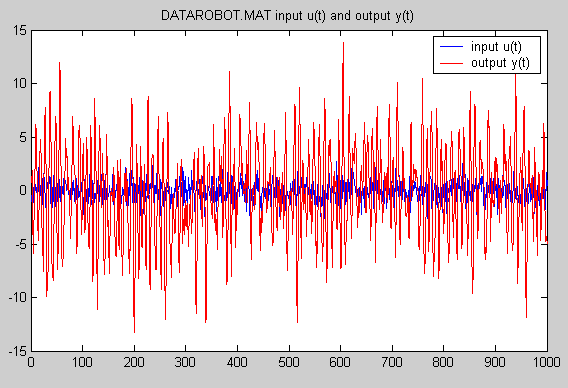Another bit of brain candy for math lovers: How many zeros are on the end of "100!"
Lost my first try at typing down the proof due to the forum time-out feature that destroys your message. *@!#$@!*&@#
So here goes again.
- first step :
Each number ending on the digit 0 adds a 0 to the total multiplication. We have 10 such numbers, where the number 100 adds two zero's.
10, 20, 30, 40, 50 , 60, 70, 80, 90 and, 100 => 11 trailing zero's added.
For the remainder of this proof we'll continue with new series of 89 numbers were the above numbers have been removed.
- Second step
Note how the trailing digit of any product of two numbers is totally determined by the trailing digit of each individual number. Example 17*23 = 391 => ends on 1 as 7*3 = 21 and also ends on 1.
By virtue of this result we know that a number ending on the digit 5 will result in a number ending on the digit 0 when it is multiplied by an even number. Example : 25*6 = 120 as 5*6 = 30
As a result we have 10 more numbers that in combination with any even number will multiply into another number with one or more trailing zeros. These numbers are :
5, 15, 25, 35, 45, 55, 65, 75, 85 and 95
If we pick our even numbers carefully then we can garantee that the resulting numbers only have a single trailing zero (and not 2 or more) and that the second last digit is out of the range 1, 2, 3, 4, 6, 7, 8 and 9. This is a handy feature as shall be shown later.
Lets say we multiply these with 4, 6, 2, 8, 12, 14, 16, 18, 22 and 24 (10 and 20 are excluded already as per above) and we find the products :
20, 90, 50, 280, 540, 770, 1040, 1350, 1870 and 2280
Note how all the results have a forelast digit that is part of the set 1, 2, 3, 4, 6, 7, 8 and 9 where the results 50 and 1350 are the only exceptions. We need to remember these numbers for later.
These 10 numbers add 10 trailing zero's to any multiplication they are part off. The may even add more depending with what other numbers the are multiplied with. The only way to be sure is to remove the 10 zero's and keep the following truncated numbers in our remaining multiplication set.
2, 9, 5, 28, 54, 77, 104, 135, 187 and 228.
We take the numbers 5 and 135 from this set and multiply them again with 26 and 28 from the full dataset resulting in :
130 and 3780
Both these numbers have a second digit that now too is of the set 1, 2, 3, 4, 6, 7, 8 and 9.
Again we remove the trailing zero's and add this to our total arriving now at 11+12 = 23 trailing zero's.
Of course we also keep these two truncated numbers 13 and 378 in our remaining dataset from which where we have now also removed the numbers 2, 4, 6, 8, 12, 14, 16, 18, 22, 24, 26 and 28 of course.
thus our subset now looks like
2, 9, 13, 28, 54, 77, 104, 378, 187 and 228. + all other numbers not removed so far.
- Third step
We are now left with a dataseries where all the numbers that end on 5 or 0 have been removed. So all remaining numbers have a trailing digit that is enclosed in the set
1, 2, 3, 4, 6, 7, 8 and 9
Mutual multiplication by numbers ending on a digit from this set is said to be "mathematically closed".
This means that any multiplication between such numbers results in a new number that is also ending on a digit out of this set (and therefor not ending on the digit 5 or 0). Of course this behaviour is recurring.
The overal result is that the multiplication of remaining series of numbers will result in a number that will also end on 1, 2, 3, 4, 6, 7, 8 or 9 and therefor never end with either a 5 or a 0. Therefor this series will never add another trailing zero to the multiplication expressed by 100! irrespectibally of how the numbers are multiplied to eachother. We can therefor scrap his whole series of remaining numbers from our notepad and just focus on the numbers that we had taken out earlier.
- Forth step
That leaves us with the following data sub result :
10, 20, 30, 40, 50 , 60, 70, 80, 90 and, 100 resulting from the numbers ending on 0
+ 12 more times the number 10 resulting from the numbers ending on 5.
This can be rewritten into 23 times the number 10 and the new dataset 1, 1, 2, 3, 4, 5, 6, 7, 8, 9.
Of course the number 5 can be multiplied by 32 out of the old discarded set to produce 160, which breaks down into 10*16 leaving us with :
24 times the number 10 and the dataset 1, 1, 2, 3, 4, 6, 7, 8, 9, 16.
All the numbers of the last data set have a trailing digit from the set 1, 2, 3, 4, 6, 7, 8 and 9. and can in turn never, under multiplication, produce a number with a trailing digit of 5 or 0 again.
And thus we have proven that the number of trailing digits is exactly 24. No less and no more.
That is assuming I have made no error somewhere.
I will have to check my own reasoning in a couple of days to spot oversights and errors. Right now I will most likely only read over them.
Maybe there is a simpler proof, but if there is then I need to let things calm down a bit before I can spot that one. Personally I don't think that the proof is of made of "very basic math" the steps themselves may not be particulary complex but composing a fully "mathematically closed" proof is certainly alot more complex and beyond the level of novices. But that assumes that the above proof is the definate proof, There may always be a very elegant pathway that we (I) haven't discovered yet.
Wouter

![[Linked Image]](http://www.acc.umu.se/~zqad/cats/1185211632-1182609131548.jpg)
![[Linked Image]](http://www.catsailor.com/bb_files/130401-Number_100_factorial.gif)

![[Linked Image]](http://www.catsailor.com/bb_files/130462-input_output_dataserie_plot_wide.gif)

![[Linked Image]](http://www.catsailor.com/bb_files/130508-Goodfigure2.jpg)
